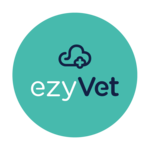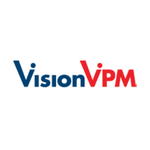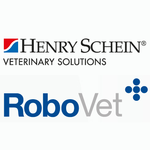What Is Veterinary Software?
Veterinary software is a comprehensive digital solution tailored to the demands of veterinary specialists. It is a robust and effective solution that streamlines numerous duties and processes within a veterinary office, allowing physicians to manage their daily operations with greater ease and convenience. At its foundation, veterinary software is a practice management system that enables practitioners to manage appointments, medical data, and invoicing all in one place.
This eliminates the need for paper records and manual data entry, saving time and lowering the likelihood of error. In addition to practice management functions, most veterinary software supports electronic medical records (EMR). This enables veterinarians to keep and retrieve patient records, lab data, and other critical information digitally, making it easier to monitor patient health and progress over time.
The capacity to manage financial transactions is an important feature of veterinary software. It offers capabilities for managing invoices, collecting payments, and creating financial reports, ensuring that the practice's financial data is correct and up to date. Furthermore, many veterinary software alternatives provide additional capabilities to meet special demands, such as inventory management for clinics that sell medications and supplies and online booking for busy clinics that want to provide convenience to pet owners.
Overall, investing in veterinary software can significantly improve a practice's productivity, patient care, and client experience. When selecting the best software for your clinic, look for a user-friendly interface, powerful functionality, dependable customer service, and interoperability with your current systems.
What Are The Recent Trends In Veterinary Software?
The veterinary sector is always expanding, and with advancements in technology, there has been a substantial shift towards the usage of veterinary software in offices. This has not only simplified processes and increased productivity, but it has also considerably improved the overall quality of animal care. As a buyer, you must stay current on veterinary software trends in order to make an informed decision when buying the best software for your business.
Here are some of the latest trends to keep an eye on:
1. Cloud-Based Platforms: With the growing popularity of telemedicine and remote work, cloud-based veterinary software has been a popular choice in recent years. These software systems save data on secure cloud servers, allowing veterinarians to access medical information, arrange appointments, and communicate with customers from anywhere and at any time. This provides greater flexibility and convenience for practices while lowering the risk of data loss.
2. Artificial Intelligence (AI): AI has already had a significant impact in many areas, including the veterinary field. AI-powered veterinary software can help with diagnosis, provide treatment regimens, and even analyse radiology pictures. This not only speeds up the procedure, but also enables veterinarians to make more accurate and evidence-based decisions.
3. Mobile Apps: The use of mobile apps in veterinary software has increased dramatically in recent years, allowing physicians to view and update patient records while on the road. These apps also include features like push alerts for appointment reminders, online medication refills, and real-time client communication, which make it easier to stay in touch with customers.
4. Data Analytics: Data gathering and analysis have become critical components of all businesses, including veterinary operations. Veterinary software with data analytics tools can assist practices in tracking key performance indicators, identifying areas for development, and providing insights to make data-driven decisions.
5. Integrations: Many veterinary software solutions now allow for integration with other software systems typically used in practices, including as accounting software and laboratory information management systems. This streamlines procedures and removes the need for human data entry, lowering the risk of errors and saving time.
Benefits Of Using Veterinary Software
Veterinary software is an extremely specialised and useful instrument that is required in any modern veterinary practice. It is intended to streamline and automate many administrative procedures, record-keeping, and data management processes, freeing veterinarians to focus on providing quality care to their animal patients. The advantages of adopting veterinary software are numerous, and they can significantly improve the overall efficiency and success of a veterinarian business.
Here are some of the major advantages that make investing in veterinary software a sensible decision:
1. Increased Efficiency And Time Savings: One of the most major benefits of adopting veterinary software is increased efficiency in a practice. Veterinarians and their staff can save time on manual processes and paperwork by using features like appointment scheduling, electronic medical records, and inventory management, allowing them to focus on caring for their patients. This efficiency results in a more streamlined and effective workflow, which enhances patient care and overall practice success.
2. Accurate And Centralised Record-Keeping: Keeping track of patient data and medical histories is essential in any veterinary practice. All patient information is recorded in a centralised area using veterinary software, making it conveniently accessible and lowering the chance of errors or missing records. This also facilitates information sharing among departments and staff members, ensuring that everyone has access to the most recent information.
3. Simplified Financial And Inventory Management: Tracking funds and inventory may be a difficult and time-consuming process in any practice. Veterinary software makes these operations easier by automating invoicing, billing, and inventory management. It also enables for real-time inventory tracking, which reduces the likelihood of supply shortages and overstocking. As a result, the practice's costs are reduced while its profitability increases.
4. Improved Client Communication: In the competitive veterinary sector, effective client communication is critical for retaining business and creating a loyal customer base. Veterinary software includes features like automated appointment reminders, texting, and web portals, allowing for easy and seamless connection with clients. This not only enhances the overall client experience, but also saves staff time that would otherwise be spent on manual communication.
5. Compliance With Regulations And Standards: Veterinary practices are subject to a variety of rules and regulations, and noncompliance can result in serious repercussions. Veterinary software facilitates compliance with these rules by automating operations such as record-keeping, medication tracking, and controlled substance management. This not only decreases the likelihood of noncompliance, but also saves time and effort in keeping correct and up-to-date data.
Important Factors To Consider While Purchasing Veterinary Software?
When it comes to acquiring veterinary software, there are various aspects to consider in order to make an informed purchase that matches your practice's individual needs.
Here are some crucial factors to consider when shopping for the proper veterinary software:
1. Capabilities And Functionality: One of the most important considerations is the software's capabilities and functionality. Determine the services you require, such as appointment scheduling, medical record management, billing and invoicing, and inventory tracking. Make sure the software you chose has all of the capabilities you need to effectively streamline your practice's day-to-day operations.
2. User-Friendliness: Another important factor to examine is the software's usability. A confusing and cumbersome software interface can cause dissatisfaction and inefficiency among your employees. Look for software that is simple and straightforward to use, with a well-organised interface. It should also include customisable choices to suit your particular workflow and preferences.
3. Integration And Compatibility: When selecting veterinary software, make sure it works seamlessly with your current systems and devices. This can save you time and effort in data entry while also preventing errors that could occur with manual entry. Consider the software's interoperability with numerous devices, such as PCs, tablets, and smartphones, to guarantee you can use it whenever and wherever you need it.
4. Customer Support: Reliable customer support is essential when utilising any program, especially for key operations such as operating a veterinarian office. Look for software vendors who provide 24-hour support and have an educated and responsive customer service team. They should also give training and materials to help you and your employees get the most out of the program.
5. Security And Data Protection: Given the growing number of cyber threats, it is critical to evaluate the security and data protection elements of veterinary software. Look for software that includes data encryption, regular backups, and safe off-site storage. This ensures the security and confidentiality of your clients' and patients' critical information.
6. Cost And Return On Investment (ROI): The cost of the program is undeniably important to evaluate, but it should not be the only deciding factor. Compare the cost to the software's features and capabilities, as well as the return on investment for your practice. Consider the time and resources you will save by using the software and measure them against the cost to evaluate its genuine value.
What Are The Key Features To Look For In Veterinary Software?
Veterinary software has become a vital tool for modern veterinary clinics, allowing them to streamline day-to-day operations and improve patient care. However, with so many options on the market, it can be difficult for purchasers to decide which functions are vital in veterinary software.
Here are the important elements to look for when selecting a veterinary software.
1. Electronic Medical Records (EMR): A strong EMR system is the foundation of all good veterinary software. It must enable for the convenient and organised storage of patient information, such as appointment history, medical notes, lab results, and treatment plans. Look for software that allows you to customise templates for different types of animals, operations, and treatments to ensure record-keeping accuracy and consistency.
2. Appointment Scheduling And Reminders: Efficient appointment management is essential in any busy veterinary practice. Look for software that allows you to easily book and manage appointments, as well as send automated reminders to your clients. This tool can help reduce no-shows and save time for both employees and clients.
3. Billing And Payment Process: A comprehensive veterinary software solution should include an EMR-integrated billing and payment processing system. This functionality simplifies the invoicing and payment processes, eliminating the need for manual computations and reducing errors. Look for software that supports a variety of payment ways and enables for customisable invoicing.
4. Prescription Management: Prescription management is an essential function of every veterinary software, allowing veterinarians to conveniently create and track prescriptions for their patients. Look for software that includes a built-in drug database, as well as the ability to send refill reminders and track medicine inventory.
5. Integration & Compatibility: Make sure the veterinary software you chose integrates seamlessly with other systems in your clinic, like as accounting software or lab equipment. This function saves time and lowers the likelihood of errors caused by human data entering.
6. Mobile Accessibility: In today's fast-paced environment, mobile-friendly veterinary software is critical for on-the-go veterinarians. Look for software that has a mobile app or a responsive website so you can access patient records, scheduling, and paying from your smartphone or tablet.
7. Reporting And Analysis: A decent veterinary software should include full reporting and analytics capabilities, which will provide useful insights into your practice's performance. Look for software that can create reports on critical parameters like revenue, appointment volume, and patient satisfaction to help you make more educated business decisions.
Why Do Businesses Need Veterinary Software?
As the veterinary profession evolves and technology advances, firms must incorporate veterinary software into their operations. This program includes a variety of features and benefits that can assist streamline procedures, improve patient care, and boost productivity and profitability. One of the primary reasons that organisations want veterinary software is to improve the organisation and management of patient records.
With electronic health records and practice management systems, all patient information can be maintained in a single area, making it more accessible and removing the need for paper records. This not only saves time and money, but also guarantees that records are accurate and full, resulting in improved patient care. Another significant advantage of veterinary software is its capacity to simplify administrative procedures.
Features such as online appointment scheduling, automated reminders, and invoicing and payment processing can significantly reduce staff workload and allow them to focus on other critical activities. This not only increases efficiency, but also improves the whole client experience. Veterinary software can also help with inventory management, letting firms to track and handle supplies and drugs more efficiently.
This can help to avoid overstocking or understocking, reduce waste, and save money in the long term. Furthermore, with the advent of telehealth services, having veterinary software with telemedicine capabilities might provide a competitive advantage. This tool enables veterinarians to provide virtual consultations and remote patient monitoring, thereby expanding their reach and enhancing client access to treatment.
Finally, with developments in data analytics and reporting, veterinary software may give organisations with vital insights into how they operate. They can monitor key performance indicators, identify areas for development, and make data-driven decisions to support the growth and success of their practice.
How Much Time Is Required To Implement Veterinary Software?
Veterinary software, commonly known as practice management software, has become an indispensable tool in modern veterinary operations. It simplifies administrative work, increases efficiency, and improves overall patient care. One of the most important elements to consider when selecting veterinary software is the time required to establish the system. The implementation process varies depending on the software and your practice's individual requirements.
However, a broad timeline might be developed to help you understand what to expect. To begin, it is critical to recognise that veterinary software implementation is a multi-step process that includes data migration, staff training, and customisation. These phases will set the overall timetable for the implementation process. On average, the implementation procedure can take between 4 and 12 weeks.
This schedule will vary depending on the intricacy of your practice, the number of your team, and the tools you use. For smaller practices with basic requirements, the installation process can take 4-6 weeks. On the other hand, larger practices with more sophisticated requirements may require 8-12 weeks to properly integrate the program.
The first stage in deploying veterinary software is data migration, which entails moving all of your current patient information, inventory, and financial records to the new system. This process can take 1-2 weeks, depending on the volume of data and the accuracy of the information provided by your clinic. Next, the software vendor will collaborate with you to tailor the system to your exact requirements.
This process can take two to three weeks, depending on the extent of customisation necessary. Once the program is installed, the staff training step begins. This usually takes 1-2 weeks, and it is critical to ensure that all team members are comfortable with the system. Following training, it is critical to test the software in a real environment to spot problems and make appropriate improvements. This can take 1-2 weeks and is suggested to be completed before the software's formal launch.
What Is The Level Of Customization Available In Veterinary Software?
When it comes to veterinary software, customisation is a crucial consideration. As a buyer, you want software that can be customised to meet your individual requirements and workflow. The level of customisation accessible in veterinary software varies according to the provider and the capabilities offered. Most veterinary software systems allow users to customise settings and preferences.
Customising templates, report layouts, and even the general interface can help to improve the user experience. Some complex veterinary software also allows users to construct custom fields and forms, which allow them to enter and track data specific to their clinic. For example, you could want to include fields for immunisations or special procedures that are specific to your clinic.
Furthermore, many veterinary software systems provide interfaces with third-party applications like accounting software or inventory management tools. This enables for greater customisation by reducing processes and improving the flow of information between systems. The extent of customisation also relies on the sort of veterinary software you select.
Cloud-based solutions typically provide more flexibility and customisation choices than on-premise applications. This is because cloud-based systems can readily incorporate upgrades and changes, whereas on-premise software may incur additional customisation costs. Finally, assess the degree of support and training offered by the software business. A competent vendor should provide comprehensive training and assistance to help you understand how to customise the software to fit your specific requirements.
Which Industries Can Benefit The Most From Veterinary Software?
Veterinary software is an invaluable resource for any industry concerned with animal care and administration. Whether you run a small veterinary clinic, a major animal hospital, a pet daycare centre, or an animal shelter, investing in dependable and efficient veterinary software can significantly improve your operations.
The following industries can benefit the most from deploying veterinary software:
1. Veterinary Clinics And Hospitals: The obvious industry that stands to benefit the most from veterinary software is veterinary clinics and hospitals. These clinics see a high number of animal patients and clients on a daily basis. They may streamline their operations using veterinary software, which includes appointment scheduling, medical records management, billing, and inventory tracking. This enables them to give better and faster services to their consumers while also increasing the overall efficiency of their practice.
2. Animal Boarding And Creche: Facilities It might be difficult for animal boarding and creche establishments to maintain track of their furry guests. They may use veterinary software to simply manage reservations, check-in and check-out, and even combine with their grooming and training services. This helps them provide a smooth and organised experience for their clients and their cherished pets.
3. Animal Shelters & Rescues: Animal shelters and rescues are responsible for a vast number of animals that require medical treatment and adoption services. Veterinarians can use software to keep track of each animal's medical history, medicines, vaccines, and possible adopters. This makes it easy for them to offer proper care and place the animals in loving homes.
4. Equine And Livestock Farms: Equine and cattle farms have distinct veterinary demands, which are met by specialised veterinary software. It allows them to manage herd health, track breeding records, and keep track of each animal's medication and treatments. This not only enhances the animals' overall health and well-being, but also aids in the maintenance of accurate and organised records for breeding and selling.
5. Zoos And Wildlife Reserves: Zoos and wildlife reserves are responsible for providing the best possible care for their animals. They can use veterinarian software to manage each animal's health and medical needs, track breeding and genetic information, and plan routine check-ups and treatments. This ensures the overall health and welfare of the animals under their care.
Conclusion
Conclusion: Choosing the correct veterinary software is critical to the success of any veterinarian office. It not only streamlines everyday operations and increases efficiency, but it also improves overall patient care and satisfaction. Before making a final decision, you should carefully review your practice's objectives and goals, compare alternative software options, and consider variables such as cost, features, and compatibility with your current systems.
The best veterinary software solutions on the market include features like medical records administration, client communication, scheduling, and billing. Furthermore, many software vendors give training and customer support to enable a smooth transfer and continuous use of the software. Investing in the correct veterinary software can result in better workflows, higher revenue, and overall practice growth. Take the time to investigate and select software that is best suited to your practice's specific needs and goals. With the correct software, you can improve your practice's efficiency while also providing excellent care to your furry patients.






















